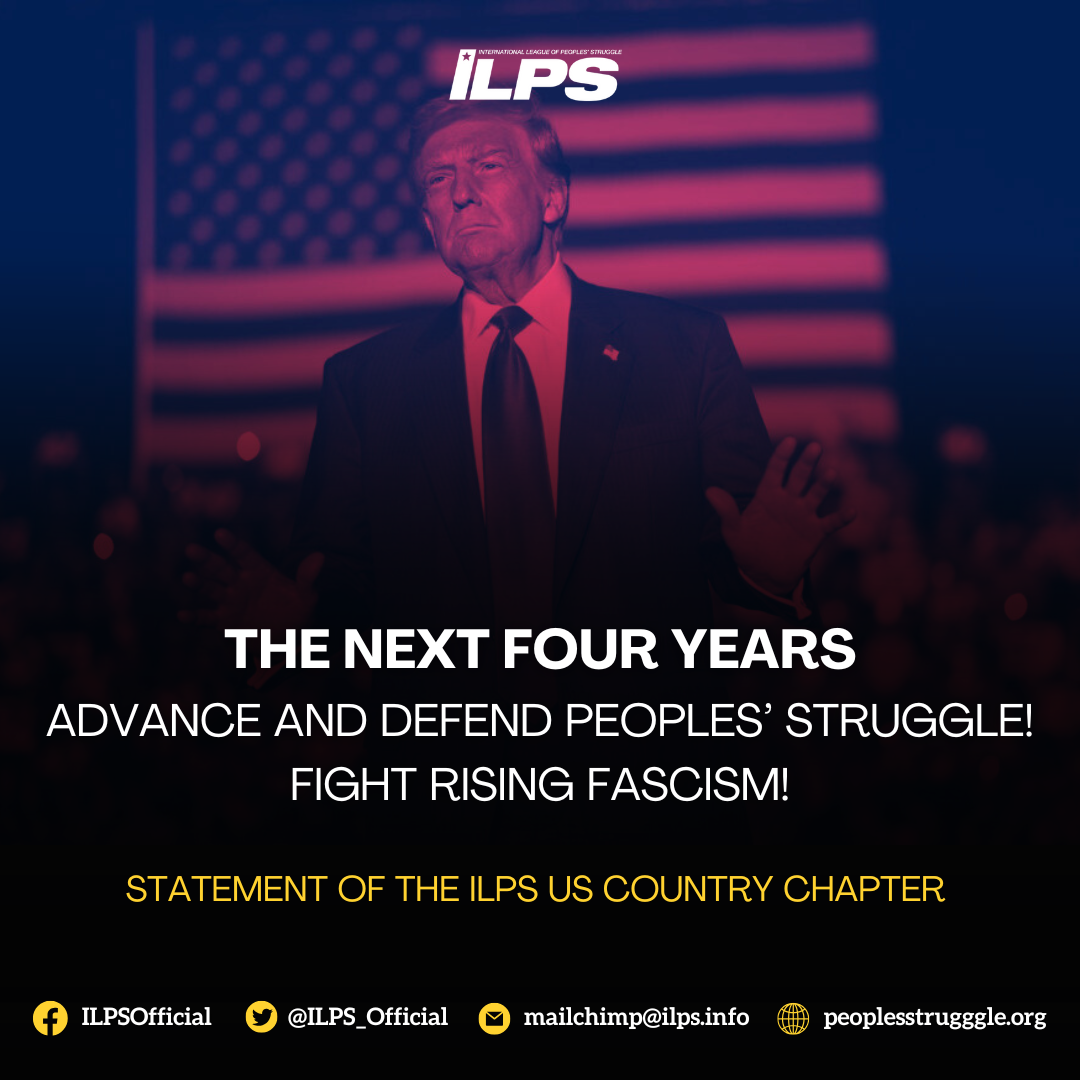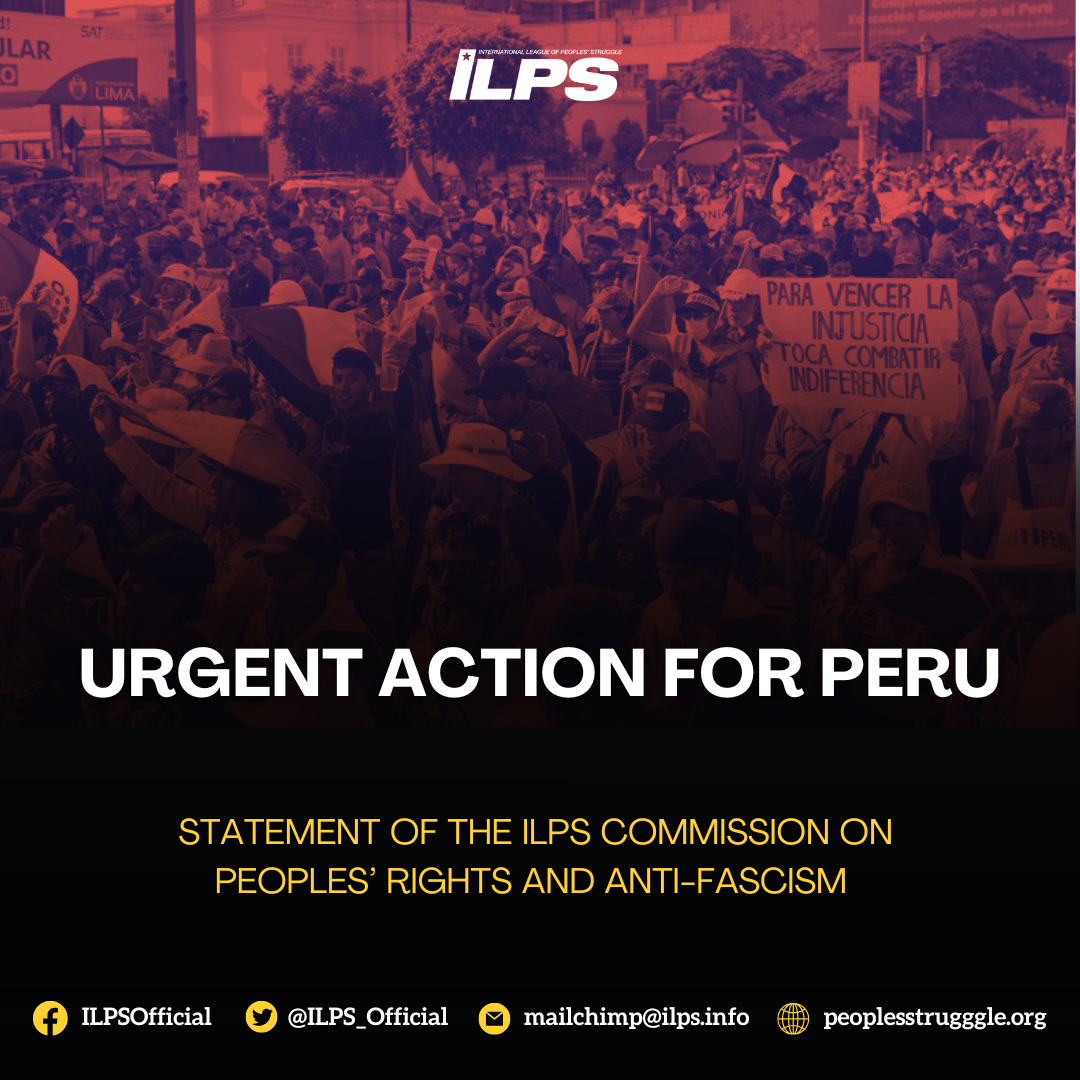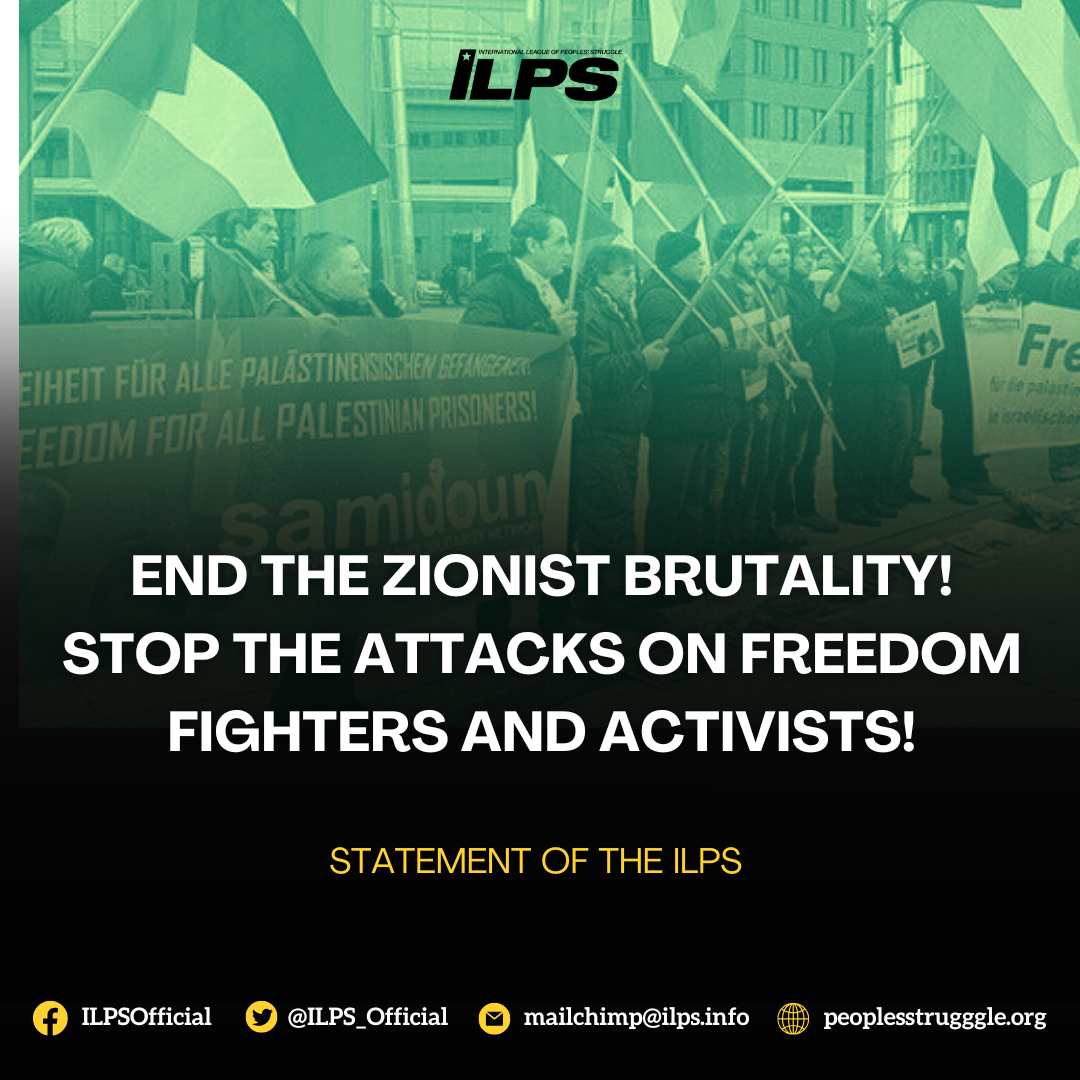Statement
ILPS-Philippines
10 September 2019
President Duterte appears to be playing a “middle ground” between the U.S. and China, two powers locked in intensifying imperialist rivalry. The US pivot to Asia and China’s expansion of power and influence in the region, especially in the South China Sea, has placed the Philippines in dire diplomatic straits. This is compounded by Duterte’s own doing and undoing.
Some observers have pointed out that the Manila government’s foreign policy is pursuing a “hedging” strategy — that is, to acquire as many returns from different powers as possible while seeking to offset long-term risks. In reality, it is more of a mendicant foreign policy for a cash-strapped economy but fuelling more resistance from the people.
Duterte’s “Build, Build, Build” program seeks greater role for Chinese financing and firms like the New Centennial Water Source-Kaliwa Dam in Quezon Province and the Chico River Pump Irrigation Project in Kalinga and Cagayan. These projects have met strong opposition from affected communities, farmers, indigenous peoples, environmental activists and human rights defenders.
China and Hong Kong’s FDI inflows in the Philippines had reached $1.04 billion in March 2018. This amount has surpassed the entirety of Chinese and Hong Kong investment of $828 million received under President Gloria Arroyo. By March 2019, it has reached US$1.97 billion surpassing the $1.2 billion under Benigno Aquino’s term. In contrast, US FDI’s in the Philippines has fallen from US$4 billion in 2018 to US$3.7 billion in March 2019.
However, these investments are not large-scale greenfield investments. Most are mergers and joint ventures and acquiring stakes in pre-existing major and smaller Philippine companies. These do not generate additional employment but only increases shareholders in the firm.
A study has shown that Chinese firms are linked not to the inward foreign investment in the Philippines, but instead the outward movement of capital. For instance, the Industrial and Commercial Bank of China (ICBC) will build branches in the Philippines, but this bank could immediately link Filipino oligarchs to major Chinese projects outside the country. Henry Sy’s SM investments in China, for example, will directly benefit from the ICBC’s branch office.
Duterte has made five presidential visits to China, and zero to the US. But this does not mean he has dumped his “liking” for Donald Trump. Duterte maintains alliance with the US in an attempt to offset long-term risks for himself. The Mutual Defense Treaty is intact. Facilities under the Enhanced Defense Cooperation Agreement as well as the annual Balikatan military exercises with the US continue. The US-designed counter-insurgency program, despite repeatedly failing under successive regimes, is still being cashed-in by the mercenary army. He even reconsidered to purchase arms from the US again after receiving some from Russia and China.
Duterte first set foot in China as president in a state visit in October 2016. Some $24 billion in soft loan funds and additional investments of close to $11.5 billion in mining, energy and infrastructure were signed. This was followed by his attendance to the Belt and Road Forum in May 2017 and the Boao Forum for Asia, also known as Asia’s answer to the annual World Economic Forum, in April 2018. Chinese investments into the Philippines reached USD 930 million, making China the top foreign investor in the country. The fourth visit of Duterte China at the 2nd Belt and Road Forum in April 2019 yielded 19 more business agreements worth US12.165 billion.
In November 2018, Xi was the first Chinese president in 13 years to go on a state visit to the Philippines.
Among the deals with China are the joint development agreements in the South China Sea. Both sides have agreed to common terms of reference for the joint oil and gas exploration deals with the final framework set to be completed this year.
Duterte has come under growing pressure at home to take a tougher stance on China, especially amid reports of Chinese warships’ intrusion into Philippine territorial sea and following the sinking of a Philippine fishing boat by a Chinese vessel. Duterte dared the US to take military action against China but soon downplayed the incident in the West Philippine Sea.
Duterte failed to assert the 2016 arbitral tribunal ruling on the Philippines’ South China Sea case against China during his visit. His lame excuse was that President Xi Jinping was troubled enough with the protests in Hong Kong.
The meeting of two extreme human rights violators in Beijing has perverted the concept of comity in international relations. The Philippines has come under fire from the United Nations Human Rights Council (UNHRC). No less than 38 nations reiterated their call on the Duterte administration to end the killings in its war on drugs and to cooperate with international bodies in investigating rights abuses. An International Peoples’ Tribunal has declared the US-Duterte regime of crimes against the Filipino people.
Duterte is increasingly being isolated in the world community. Having to play both parts, as a US stooge and a China lackey, he only has himself to blame for standing right smack on the violent collision course of the two imperialist giants and dragging the entire country under their feet. The people have no choice but to resist, fight back, oust an undeserving president, and assert genuine freedom, democracy and social progress.
###



